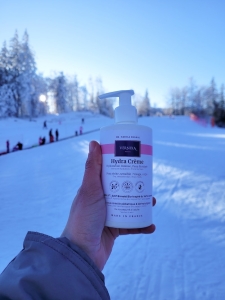Reading Time: mins
Sucrose, commonly known as 'table sugar', plays a vital role in our daily lives, both in food and cosmetics. This article explores the use of sucrose in both areas, highlighting its benefits and diverse applications.
Sucrose is a disaccharide, formed by the union of two monosaccharides: glucose and fructose. This structure makes it useful both as an energy source in nutrition and as a moisturizer in cosmetics. This section details how this structure affects its presence in various products.
Mainly extracted from sugar cane and sugar beet, sucrose is also present in various fruits. This segment discusses sucrose extraction methods, its economic importance and environmental impact, and sustainable production practices.
In cosmetics, sucrose is particularly used as a gentle exfoliant in scrubs, helping to remove dead cells while moisturizing the skin. This section examines its role in various cosmetic formulations.
Sucrose is also beneficial in hair care products, particularly for scalp hydration. The benefits of sucrose in hair care and the types of products incorporating it are also explained.
Here, alternatives to sucrose for people with diabetes or looking for more natural options are discussed, as well as precautions for those sensitive to sugars.
Answers to frequently asked questions about sucrose clarify common doubts about its uses and effects in both food and cosmetics.
Sucrose is essential in a variety of sectors, bringing notable benefits in both cooking and cosmetics. This guide aims to provide a detailed overview of its applications and benefits, while highlighting the necessary precautions.
All Rights Reserved | Tous Droits Réservés GTIN Compliance Hydra Lavant | GTIN Compliance Hydra Crème



